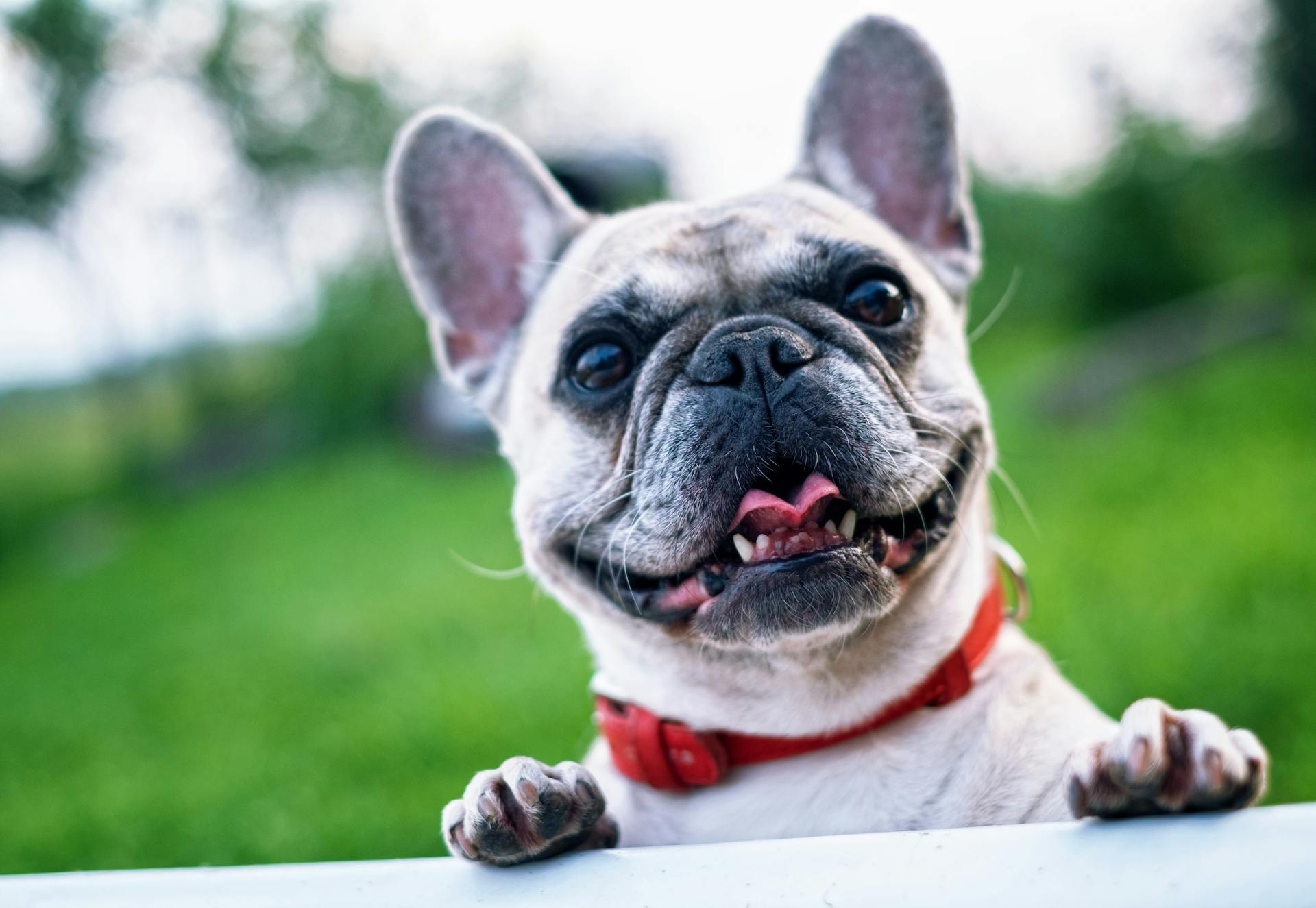
Breeding a dog can be a wonderful experience, but it's essential to plan ahead and ensure the best possible outcome for both the mother and the puppies. The best time to breed a dog depends on several factors, including the dog's breed, age, and health.
A female dog can become pregnant again shortly after giving birth, typically within 50 to 60 days. However, breeding too soon after whelping (giving birth) can lead to complications and health issues for the mother.
To avoid these risks, it's crucial to wait until the mother has fully recovered from her previous pregnancy and has regained her pre-pregnancy weight. This can take anywhere from 6 to 8 weeks after whelping.
Breeding a dog requires careful planning and consideration, but with the right timing and preparation, you can set the stage for a successful and healthy pregnancy.
Determining Mating Time
You can't just guess when to breed your dog, you need to know the exact time to increase the chances of a successful mating. A vaginal smear test can be performed by your veterinarian to detect changes in cell appearance and numbers, predicting ovulation and the best time for breeding.
You might enjoy: Are Portuguese Water Dogs Good for First Time Owners
This non-invasive test is reasonably reliable and can be performed serially over several days to monitor changes in the cells. Your veterinarian can also perform a serum progesterone test, which measures the progesterone level in the blood and is very sensitive and accurate.
Most females are receptive around the eleventh day of oestrus, but ovulation may occur early or late during the heat cycle. It's essential to have your female dog tested to determine the optimal days for breeding.
To predict when your dog will be most fertile, you can count the days of her season, starting from the first day you notice signs of heat, such as swollen genitals and a bloody discharge. However, this method may not be entirely accurate, and it's best to rely on tests performed by your veterinarian.
Here are the two simple tests your vet can perform to determine when your dog is most fertile:
- Vaginal smear test (vaginal cytology): Your vet will take a series of swabs from your dog's vagina and examine the cells under a microscope to see any changes that suggest ovulation.
- Blood tests: Your vet will measure the levels of hormones in your dog's blood over several days to accurately determine when she's most fertile.
By using these tests, you can increase the chances of a successful mating and ensure the health and well-being of your dog.
Successful Mating
For a successful mating, it's essential to consider the male dog's environment. Males are more stress sensitive than females during mating, so it's best to have the female dog visit the male dog's home.
The timing of mating is critical, and it's recommended to have your female dog tested to determine the optimal days for breeding. For most females, the best time is between the tenth and fourteenth day of oestrus.
Blood tests will help determine the best period for your dog, and some females ovulate as early as the third or fourth day or as late as the eighteenth day. It's normal to arrange for two matings, often 24 or 48 hours apart.
The genital anatomy of the male and female dog is designed for a successful mating, where the penis remains locked in the vagina after ejaculation. This is known as the "tie", a desirable feature of a successful mating.
A fresh viewpoint: National American Eskimo Day
Pregnancy can occur without a "tie", but it's essential to note that the "tie" should not be forced. The male dog will often step over the female or be turned by handlers into a position so that the animals are back to back.
Separating animals that are locked in this way can be challenging, and using methods like buckets of cold water or cap guns can cause more harm than good.
Expand your knowledge: Straight Backed German Shepherds
Breeding and Pregnancy
Most female dogs can become pregnant during their first season, which can be as early as 6 months old, depending on their size and breed.
A typical gestation period for a dog is about 63 days or 9 weeks, with a range of 58 to 65 days.
Responsible breeders typically wait until their female dog is physically and mentally mature enough to cope with having puppies, usually after several seasons, before deciding to breed her.
Reproductive Tests
Puberty in female dogs usually occurs around six months of age, with smaller breeds going into oestrus or "heat" earlier, sometimes as early as four months.
On a similar theme: Bernese Mountain Dog 6 Months
The age of puberty can vary, with large and giant breeds not reaching heat until they are up to two years old.
Your veterinarian can perform two simple tests to determine when to mate your dog: the vaginal smear test and the serum progesterone test.
The vaginal smear test is a non-invasive, reliable, and comfortable test for the female dog, and it involves a microscopic examination of vaginal cells to detect changes that predict ovulation.
The serum progesterone test is a sensitive and accurate test that measures the progesterone level in the blood, giving a good indication of when mating is most likely to be successful.
Both tests can be performed at the veterinary practice, and some pets may require several tests to predict ovulation.
The serum progesterone test is particularly useful for females with a history of unsuccessful mating or for breeding dogs that have to travel a considerable distance to the male dog.
Here are the two tests used to check when a dog is most fertile:
- Vaginal smear test (also known as vaginal cytology): Your vet will take a series of swabs from your dog’s vagina and will look at her cells under a microscope to see any specific changes that suggest she’s ovulating.
- Blood tests: Your dog’s hormones change as she moves through the different stages of her season, and over several days your vet can measure the levels of these hormones in her blood to accurately find when she’s most fertile.
Female Dog Heat Cycles
A female dog's heat cycle is a crucial part of breeding, and understanding it is essential for responsible dog breeding.
Most female dogs ovulate and are receptive around the eleventh day of oestrus, but ovulation may occur either early or late during the heat cycle. This makes it difficult to pinpoint the exact best time to mate your dog.
The heat cycle typically lasts two to three weeks, starting with the first signs of vulvar discharge, swollen vulva, and the female's interest in males. This usually occurs every six months, although it can vary from dog to dog.
Dogs can get pregnant from their very first heat cycle, which typically happens around six months of age, depending on their size and breed. Smaller dogs can have their first heat cycle earlier.
To determine when your dog is most fertile, you can use the vaginal smear test or serum progesterone test performed by your veterinarian. These tests can help predict ovulation and the best time for breeding.
A different take: Is Lhasa Apso Good for First Time Owners
Here's a rough guide to help you understand your dog's heat cycle:
Keep in mind that every dog is different, and their heat cycles may vary. It's essential to work with your veterinarian to determine the best breeding schedule for your dog.
Dog Gestation Periods
A typical dog gestation period is about 63 days, which is roughly 9 weeks. This can vary slightly, ranging from 58 to 65 days.
Both large and small dogs tend to have a 9 week gestation period.
If your dog is pregnant, it can be tricky to tell until the later stages of pregnancy, so it's a good idea to bring her to the vet for a check-up.
A veterinarian can manually palpate your dog's abdomen to determine if she's pregnant as early as 25 days after breeding.
Timing and Scheduling
Timing and Scheduling is crucial when it comes to breeding a dog.
Breeding seasons vary by breed, but for most dogs, the best time to breed is during the spring and summer months.
A female dog's heat cycle is typically 2-3 weeks, and breeding should be done during the peak of her cycle for optimal chances of conception.
Breeders often plan breeding schedules around the female's heat cycle to maximize the chances of successful breeding.
A successful breeding typically occurs within 24-48 hours of mating.
Check this out: Dogs Breeds That Start with B
Frequently Asked Questions
How long after a dog starts bleeding is she ready to breed?
Typically, a dog is ready to breed about 9-10 days after bleeding starts, when the bleeding becomes more watery or stops. This is usually during the proestrus stage, which can last up to 20 days
Sources
- https://www.britannica.com/animal/dog/Reproductive-cycle
- https://www.vetwest.com.au/pet-library/reproduction-in-dogs/
- https://www.thekennelclub.org.uk/dog-breeding/first-time-breeders/dog-mating/
- https://www.newportharborvets.com/services/dogs/blog/planning-canine-breeding
- https://help.dogs.ie/knowledge-base/heat-cycles-for-breeding-dogs/
Featured Images: pexels.com


